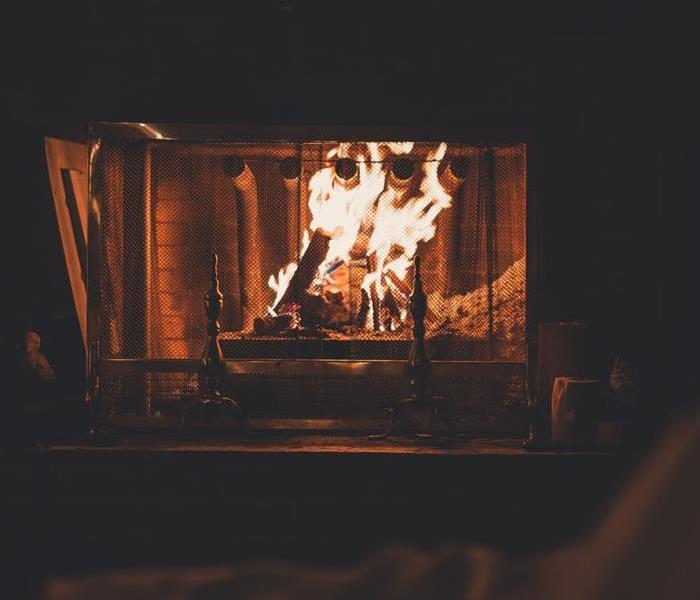How To Use Your Fireplace Properly And Safely
12/3/2019 (Permalink)
One of the best things about colder weather is being able to curl up in front of a roaring fire in the fireplace. Such a fire is beautiful, cozy, and aromatic, of course, but it can also be extremely dangerous if you don’t take the proper precautions. Almost half of all home-heating fire and emergency room visits every year are related to fireplace usage.
Today we would like to share some tips on how to use your fireplace both properly and safely:
- Inspection. Have your fireplace and its chimney inspected by a professional every year. They should examine:
- The flue and its ability to open and close, as well as its seal
- Whether there are cracks or loose bricks
- Whether the mortar is crumbling or missing
- If the chimney is leaning
- If the chimney cap is present to keep out rain, animals and debris
- Cleaning. Your chimney and fireplace should be cleaned before each winter by a certified chimney sweep. If any debris is present, inadequate venting can occur and toxic fumes may end up in the home. Soot and creosote buildup can also cause a chimney fire.
- Wood. Burn only dry and seasoned wood or fire logs that have been specially designed for the purpose.
- Spark Guard. Install a spark guard to prevent sparks or embers from coming out of the firebox and setting fire to anything near. Keep flammable materials, such as Christmas trees and decorations, at least three feet away from the fireplace and open flame.
- Build a safe fire.
- Open the flue before lighting for proper ventilation.
- Place logs at the rear of the fireplace on a metal grate.
- Use crumpled paper and kindling that is no thicker than a human thumb to start a small fire. Don’t use an excessive amount, as this can over-build the fire and ignite any soot in the chimney.
- Use matches or a commercial firelighter to start your fire. Never use gas or any other fuel for this purpose.
- Add logs gradually as your kindling ignites and as the fire builds.
- Ensure that your fireplace isn't overloaded. This is actually more dangerous than even a controlled burn. A large fire can crack your chimney.
- Let ashes cool completely before you remove them, and add a bit of water to make sure no hidden embers reignite.
- Never leave your fire unattended.
If you should ever experience a house or building fire, be sure to call a fire and smoke damage restoration service for emergency cleaning. SERVPRO of Huron/East Seneca Counties is available 24/7 to help with all fire damage restoration emergencies, as well as cleanup from flooding and other water-related damage situations.






 24/7 Emergency Service
24/7 Emergency Service
